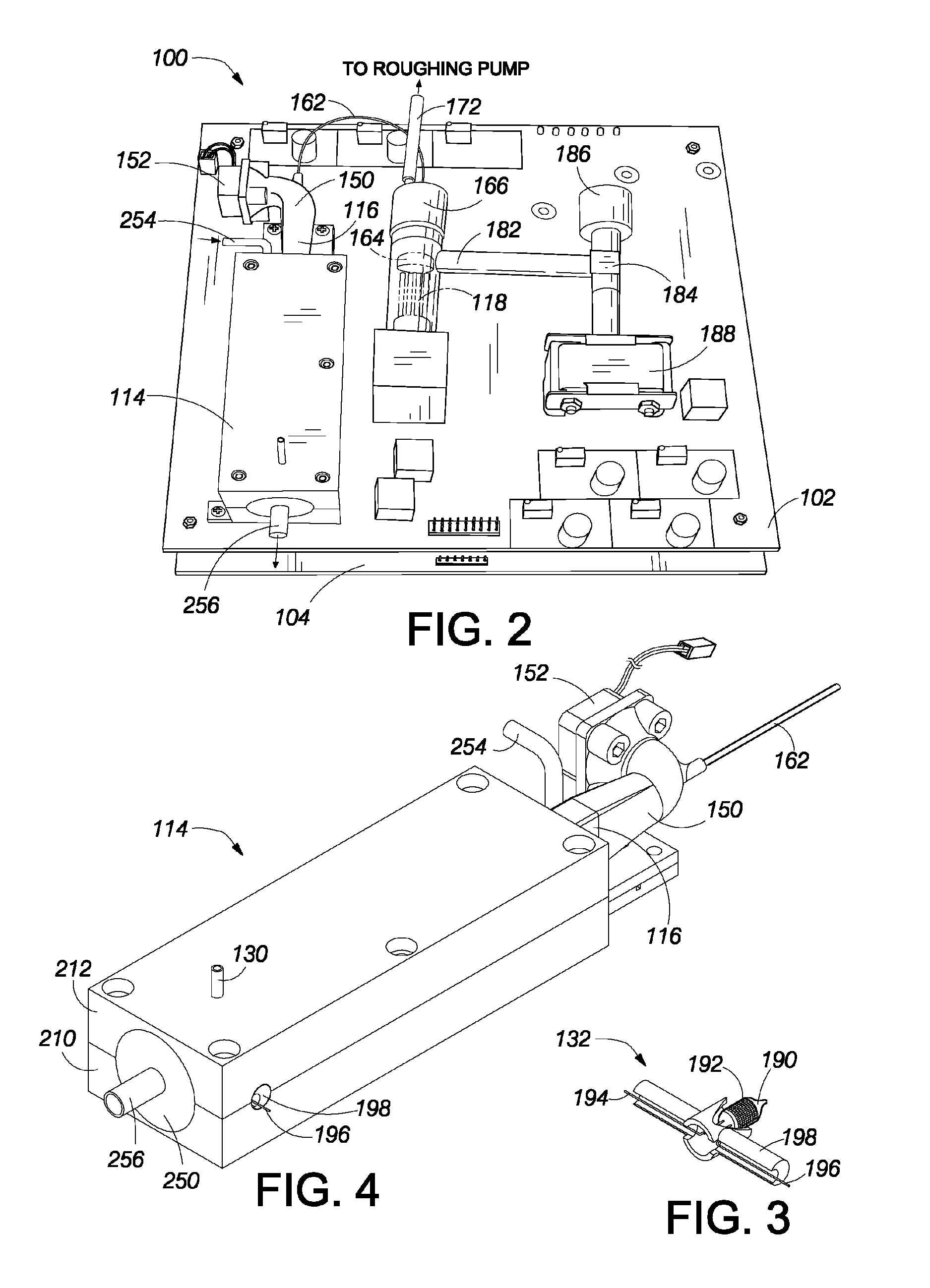Real-time trace detection by high field and low field ion mobility and mass spectrometry
- Summary
- Abstract
- Description
- Claims
- Application Information
AI Technical Summary
Benefits of technology
Problems solved by technology
Method used
Image
Examples
Embodiment Construction
[0055]FIG. 1 illustrates a block diagram of a system 100 for detecting trace amounts of chemical materials, such as, for example, explosives, contaminants and other target analytes of interest. The system uses atmospheric pressure ionization in both positive and negative ion modes to separate the molecules being analyzed. The system uses multidimensional orthogonal detection and analysis.
[0056]FIG. 2 illustrates a perspective view of an embodiment of the system 100 looking from the top. For illustration purposes, some of the components of the system 100 are not illustrated in one or both figures. As shown in FIG. 2, the system 100 comprises a first (upper) circuit board 102 and a second (lower) circuit board 104 that are attached to each other in a spaced apart configuration using conventional standoffs. The primary system components shown in FIG. 1 are mounted on the upper circuit board. The low voltage supplies and the digital circuitry (e.g., a system controller and associated co...
PUM
 Login to View More
Login to View More Abstract
Description
Claims
Application Information
 Login to View More
Login to View More - R&D
- Intellectual Property
- Life Sciences
- Materials
- Tech Scout
- Unparalleled Data Quality
- Higher Quality Content
- 60% Fewer Hallucinations
Browse by: Latest US Patents, China's latest patents, Technical Efficacy Thesaurus, Application Domain, Technology Topic, Popular Technical Reports.
© 2025 PatSnap. All rights reserved.Legal|Privacy policy|Modern Slavery Act Transparency Statement|Sitemap|About US| Contact US: help@patsnap.com



